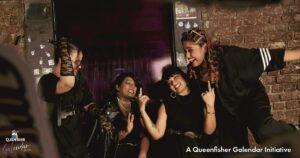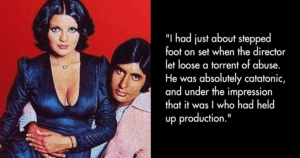Whether it’s getting the right to vote or making a professional name for themselves, women have never really had it easy. And in such a scenario, being a creative person is even more difficult. You want your work to be recognized but you also know that as a woman in the creative field, you’re hardly taken seriously.
This has been the plight of women writers for the past various centuries. But some women, who trusted their writing skills, found a rather creative way to establish themselves: using male or ambiguous pen names.
You’d be surprised to know that some of the most famous female authors that we know have had to use masculine pen names for the sake of being taken seriously. As sad as that is, it is also amazing how these women wrote words that are read even till now.
Here’s a list of some famous female authors who used masculine pen names:
1. Charlotte Brontë
So many of us have read her book, Jane Eyre, as part of compulsory reading and it is only now that the author has been able to establish her name within the literary society. However, what most of us don’t know is that she used the male pen name Currer Bell to publish her books. The reason behind this, as stated by herself, was, “We did not like to declare ourselves women, because – at that time suspecting that our mode of writing and thinking was not what is called ‘feminine’ – we had a vague impression that authoresses are liable to be looked on with prejudice.”

2. Louisa May Alcott
Most famously known as the author of Little Women, another classic we’ve all grown up with, she also used to write under the male pseudonym, A.M. Barnard. While Little Women was published under her original name, she used the male pen name to write gothic thrillers, the subject of which was deemed ‘unladylike’ for a late 19th century female writer. Even to experiment with genres, women were forced to adopt masculine pen names that would decrease the readers’ prejudice against female authors.

3. Mary Ann Evans
She is still more famous by her pen name, George Eliot. Yes, the author of The Mill on the Floss was actually a woman! The reason to use a male pen name was simple: she believed it would help her escape female stereotyping. She adopted her male pseudonym George Eliot when she was romantically involved with George Henry Lewes, an English philosopher who encouraged her fictional writing.

4. Harper Lee
Most famous for her novel To Kill A Mockingbird, Nelle Harper Lee consciously dropped her first name which sounded too feminine and adopted a name that seemed more ambiguous in terms of gender. When she published her work back in the 1960s, most well-established authors were men. We never really acknowledge this but her work was probably taken seriously because of the pen name. If Harper would have chosen to keep her identity hidden, readers may not have even known they were reading a woman’s words.

5. J.K. Rowling
We have, as a generation, grown up with Harry Potter. No matter which corner of the world you live in, you’ve at least heard about the wizard boy’s story. You can’t deny that we, as a generation, were quite shocked when we discovered that J. K. Rowling was a woman. Joanne Rowling chose the male-sounding name consciously. In fact even her publisher supported this decision as it was felt that the young male readers of “Harry Potter” would be unable to connect to the plot if the author’s name was feminine.

6. Alice Bradley Sheldon
Alice had a flourishing career as a graphic artist, painter and art critic but she wanted to write science fiction. She took on the pen name of James Triptree and went on to write famous science fiction books including The Girl Who Was Plugged In. In an interview, she admits, “A male name seemed like good camouflage. I had the feeling that a man would slip by less observed. I’ve had too many experiences in my life of being the first woman in some damned occupation.”

7. Amantine Lucile Aurore Dupin
At times, you read about someone and are sure that they were born in the wrong century. Something similar can be said for Amantine who was quite infamous in Paris for wearing men’s clothes and smoking in public in the early 1800s. Nonetheless, she went on to write stories that brought out issues that plagued the society of her time. However, whatever she wrote was under the pen name George Sand. No matter how bold she was for the society, she also probably knew that to be recognized as an author, she would need a male name.

8. Catherine Nichols
The bias against women isn’t a thing of the previous centuries. It still happens and Catherine’s story is an example of that. She planned on carrying out a little experiment. She re-sent her publishing query under a male name that she had already sent under her own name. The query sent under the male name actually started getting replies. What she understood was that even in an industry which is responsible for spreading progressive ideas, you are ignored because of your gender.


















